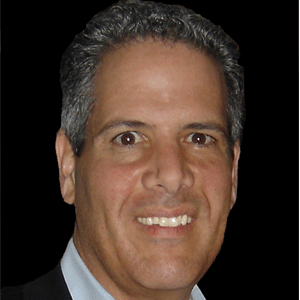THANK YOU FOR SUBSCRIBING

Keys to Effective Financial Leadership to Drive Revenue Growth
Ken Judd, CFO, Keste and CFO, Keste


Ken Judd, CFO, Keste
A CFO’s two main goals are to reduce enterprise risk and maximize enterprise value. To do so effectively, you need actionable data that will allow you to manage your resources and maximize their profitable use. This is a well-understood concept in the manufacturing space, where strict resource discipline has been brought to the factory floor. There you can analyze the flow of nuts and bolts, optimize your inventory levels and calculate fulfillment costs down to the penny.
But it is different if your key resource is your people, and traditional MRP and ERP systems cannot adequately fill the modern day CFO’s need for actionable data.
For professional services firms, the key asset is employees–not machinery or equipment. Talent can be a competitive differentiator; however the key to maximizing value is to maximize the profitable utilization of your talent. This is a very real business problem for any professional services firm, or any firm (for that matter) that has a large contingent of skilled professionals and knowledge workers.
But it is not just about the effective management of talent. Many companies today have embraced lean operational strategies.
Manufacturing companies have been leaders in lean production methods and have profited from those efforts. However, the payoffs have not been nearly as dramatic for professional services firms. The management of human resources can be very labor intensive, which butts up against corporate mandates to run lean. This reduces any profitability gains.
Service industries–in general–are a long way behind manufacturing. This is where technology can play a key role.
Service industries need a scalable platform to better manage and maximize knowledge workers’ profitability.
Actionable Insight is Needed
Professional services firms earn revenue on a project-by-project basis. Any professional services company needs to be able to analyze the profitability of multiple, simultaneous projects. Therefore, CFOs need actionable data–specifically project revenues, hours billed, realized bill rate, utilization statistics, costs and margins and various project milestones (including spend-to-date, estimates-to-completion etc.).
However, static numbers are not enough. CFOs and their financial teams need to be able to drill down into those numbers and view the information at the:
- Individual resource level–to track the employees’ project engagement histories and redeploy other skilled assets as/if necessary.
Realized Benefits
There are software packages–namely Professional Services Automation (PSA) software packages–that can help manage your knowledge workers’ utilization profitability, as well as reduce risk and drive enterprise value. They provide the information CFOs need to understand how employees spend their time, in what ways they are profitable, and what are the true costs and revenues associated with every project hour. They allow professional services firms to profitably utilize their skilled employees. With that information, a company can realize very tangible business benefits. For example:
At the individual level–
Very targeted, variable compensation plans can be created–for both individuals and teams. The current shortage of skilled knowledge workers in many industries impacts professional services firms in many ways–from professional burnout to lack of project resource bandwidth. In addition, a level of autonomy is provided to the workers. Utilizing enterprise portal platforms, consultants can access their own statistics, allowing them to self-regulate their progress toward their compensation reward. This boosts employee satisfaction and engagement, which, in turn, reduces the high cost of turnover.
At the customer level–
All internal stakeholders can have financial “eyes” on every project. Problems can be quickly identified and mid-course project corrections can be made before they get to “red alert” status. This leads to not only higher engagement profitability, but to the modification of key internal operational processes (i.e. contract creation procedures) that will allow greater profitability to carry forward.
In addition, by having these financial “eyes” on projects, professional service firms are able to change the types of conversations they have with their clients. The conversation moves away from one of service to one of solutions and value. With this new focus on value comes a certain level of market differentiation, which lowers the risk of competitive price erosion.
At the project level–
Comes agility. The executive team is able to identify profitable practice areas and opportunities to grow or change. Decisions are made based on fact and not on gut. In addition, employee capacity levels can be better managed and recruiting opportunities can be identified quicker. When a professional services firm knows what skills are in demand, they can make informed decisions around recruiting, building a bench and which practice areas need more (or less) support.
Finally, a scalable PSA platform provides needed data– fast–and only requires a minimal accounting staff. This allows a company with a flat hierarchy to achieve the same level of profitability as those organizations with massive administrative support departments. In other words, they can continue to operate “lean”. It also allows the CFO to focus on revenue generating activities instead of back-office “number crunching”.
Chances are that–no matter your industry–your most valuable asset is your skilled employee base. By better understanding who are your key contributors, how they are being used and where you can improve their utilization, you can provide real value.
Weekly Brief
I agree We use cookies on this website to enhance your user experience. By clicking any link on this page you are giving your consent for us to set cookies. More info
Read Also
Navigating Compliance Challenges in ESG AML and Digital Onboarding
A Vision for the Future: Automation, Robotics, and the Smart Factory
The Rise of Hyper Automation
Transforming Business Operations with Robotic Process Automation
Combining Automation with AI to Achieve Human-Like Interaction
Implementing RPA - 5 Ultimate Prerequisite
Incorporating the power of recognition into our vendors' sustainability journey
Elevating Guest Experience with Data





















